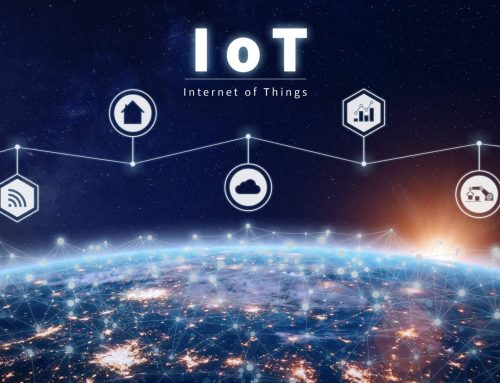When it comes to the Internet of Things (IoT) and its applicability to creating value in the products and services of lower middle (LMM) and middle market (MM) industrial companies, is it all sizzle and no steak? It’s a critical question, because these markets can’t survive on sound and scent alone – they neat to add real meat to their bottom lines.
The question has come up more than a few times during my travels in Europe and the U.S., and it’s been flavored still more (clearly, food is on my mind) by the rapid IoT-supported evolutions in the electric vehicle, electric utility (smart metering), vehicle / asset tracking, and marine industries. Today, for example, there are more than 200 million smart electric meters installed worldwide and that number is growing – rapidly.
Which is why I believe we’re moving beyond the sizzle and are going to start seeing IoT built into future LMM and MM revenue projections, as they incorporate IoT into their product and service line strategies. I think that we are going to see this for three reasons
- Recurring Revenues – IoT offers a huge bonus for traditional products companies with solid recurring revenue streams potentially boosting multiples
- New Growth – IoT offers a growth path beyond market share and/or GDP-driven growth. We’re talking new growth opportunities.
- Competitive response – The competitive landscape is shifting significantly across multiple industrial verticals
All that said, in looking to acquire industrial product or service companies, GPs and their teams are going to have to figure out whether revenue projections including IoT are sizzle – or steak. This is no longer just about improving operational efficiencies, or growing the top line, in the current business model. IoT is a different business model.
Where’s the Beef?
To understand the reality of any IoT growth shown in a target firm, we have three scenarios to consider that may present in any CIM:
| CURRENT STATUS | CONDITIONS | RESULTS |
|---|---|---|
| There is no current IoT | It’s all in the projections | All sizzle |
| The business has embarked on an IoT Proof of Concept | It’s all in the full deployment | Lots of sizzle, a bit of steak |
| The business has a first-generation IoT deployment with paying customers | It’s all about scaling | Plenty of steak AND sizzle |
Scenario 1 – There is No current IoT
We need approach this type of company from the ‘glass is half empty’ perspective. If there is movement in the competitive landscape and the company has not strategized it or even detected it, then there may well be risk to the future (non-IoT) revenue projections. If we decide to continue to explore acquiring the firm, then we need to take a long, hard look at the implications for our investment in building a profitable IoT revenue stream.
As IoT was not in the strategic thinking of management, the decision to pursue it will be a significant investment and organization transformation challenge – IoT revenue streams challenge core business models.
It is unlikely that this level of investment risk would be acceptable. But for a team with a sufficiently deep domain knowledge and patient capital, these kinds of companies could deliver outsized returns.
Scenario 2 – There is an IoT Proof of Concept Project
The truth, of course, is that most POCs go nowhere, usually because there was no real business case behind it. Central to this is the question of whether the project is a ‘Proof of Value’ as opposed to ‘Proof of Concept.’
However, there are some straightforward questions that we can pose to management in any diligence process that allow us to assess the viability or the business case.
| KEY QUESTION | EXPLANATION / REINFORCEMENT |
|---|---|
| Is there demonstrable value? | Is this a science project or have customers expressed real interest? And what is the concept? |
| Is there clarity on the commercial model? | Has the thinking extended to a detailed understanding of what customers would pay for and how they would pay for it? |
| Is there a detailed process map that explains how the data flows from the device to the customer? | Understanding this ‘map’ is a critical guide to key elements of the IoT business model |
| Are the partners (external firms) in value delivery clearly identified and are likely contractual terms understood? | A major clue about the viability of the POC and business model revolves around these partners |
| Is there a detailed cost model covering the life cycle (production, deployment, management and retirement) of the IoT devices? | The outcome of the cost model helps to understand elements of future margin performance. The construction of the model shows how management are thinking about the business model |
| Is there a decision about new in-house capabilities and skills or external partnerships? | IoT will drive the need for new skills in technology, supply chain and selling |
There may still be plenty of sizzle present, but the questions help us understand how much steak is actually possible, and how much it might cost.
Scenario 3 – IoT Deployed with Paying Customers
This company has made it through the POC stage and has a viable IoT offering with actual paying customers. There’s plenty of steak in this company, so the real issue here is the degree to which that IoT can be scaled.
Scaling is a non-trivial problem in most companies. With IoT we can construct some straightforward questions that will help us to better understand the realities of growing the first-generation deployment into a much more significant share of future revenues.
| KEY QUESTION | EXPLANATION / REINFORCEMENT |
|---|---|
| What are the measurable results at the customer? | What value have the customers got from the development? |
| What is the appetite for the product or service? | What is their critique of the product? What do they want in the future? Do they want to buy more? |
| What is the reality of the margin model? | Is the business model delivering returns and what are the margin improvement opportunities? |
| What is the future demand forecast? | Do we understand this in terms of volume and geography? |
| What are the scaling challenges and the investment plans to support them? | Device production
Device comms and infrastructure Device installation Data aggregation and insights |
A profitable first-generation deployment delivers plenty of steak, but the sizzle may belie a problematic and costly scaling challenge.
I believe that we will increasingly see LMM industrial product and service firms being transacted where IoT appears in the future performance projections; the allure of recurring revenue streams and ‘data as the new oil’ will simply be too much to resist.
Because the IoT business models are so different, diligence insights and investment cases will need to be changed too.





